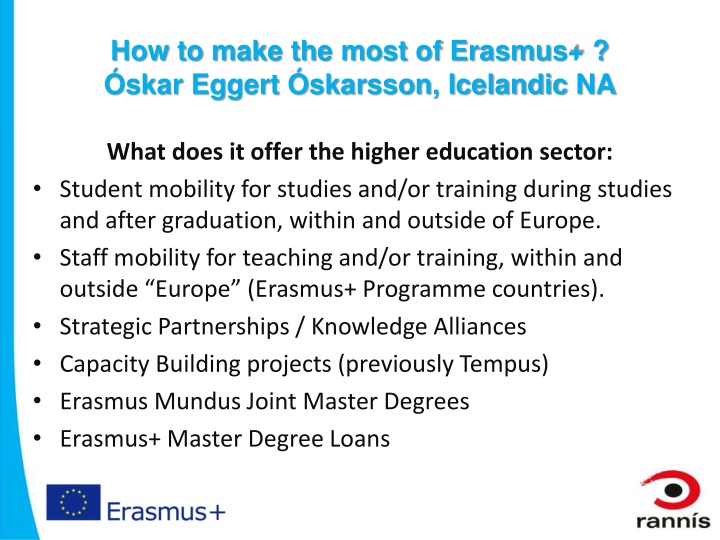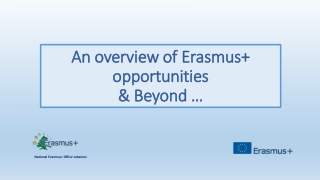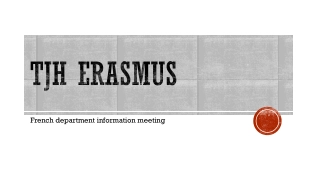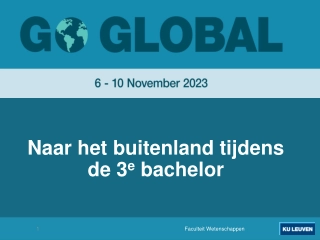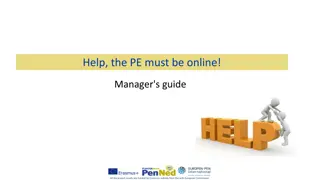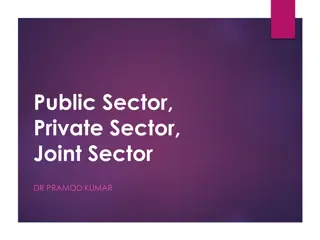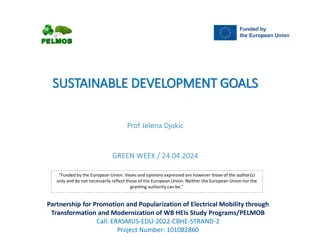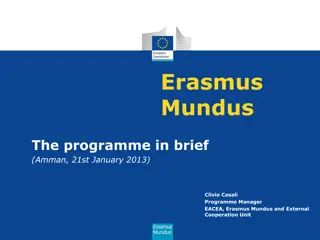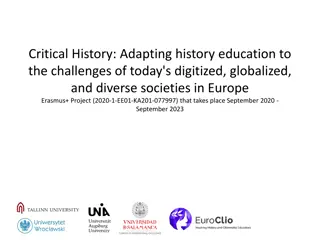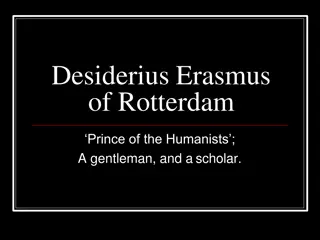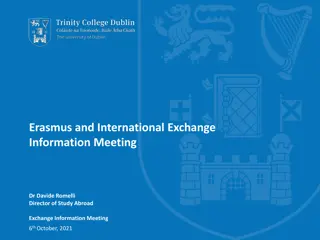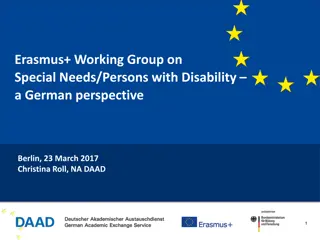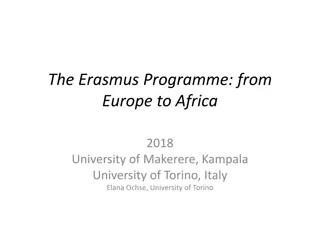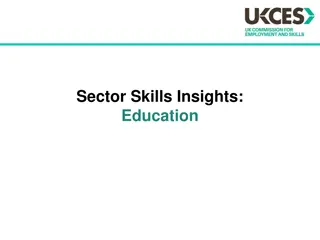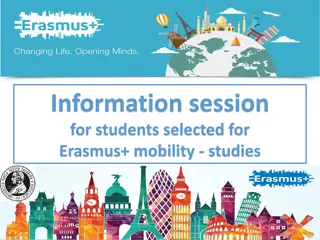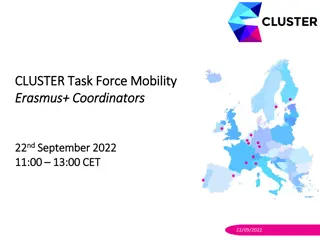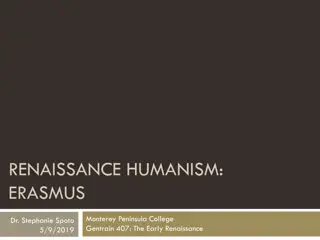Making the Most of Erasmus+: Opportunities for Higher Education Sector
Erasmus+ offers various opportunities for the higher education sector, including student and staff mobility within and outside of Europe, strategic partnerships, capacity building projects, Erasmus Mundus Joint Master Degrees, and more. Policy objectives focus on enhancing employability, quality improvement, and meeting Europe 2020 targets. Student mobility includes new features like longer placements and mobility after graduation. Staff mobility emphasizes strengthening links between education, research, and business. Additional funding and simplified financial management enhance international cooperation.
Download Presentation

Please find below an Image/Link to download the presentation.
The content on the website is provided AS IS for your information and personal use only. It may not be sold, licensed, or shared on other websites without obtaining consent from the author.If you encounter any issues during the download, it is possible that the publisher has removed the file from their server.
You are allowed to download the files provided on this website for personal or commercial use, subject to the condition that they are used lawfully. All files are the property of their respective owners.
The content on the website is provided AS IS for your information and personal use only. It may not be sold, licensed, or shared on other websites without obtaining consent from the author.
E N D
Presentation Transcript
How to make the most of Erasmus+ ? skar Eggert skarsson, Icelandic NA What does it offer the higher education sector: Student mobility for studies and/or training during studies and after graduation, within and outside of Europe. Staff mobility for teaching and/or training, within and outside Europe (Erasmus+ Programme countries). Strategic Partnerships / Knowledge Alliances Capacity Building projects (previously Tempus) Erasmus Mundus Joint Master Degrees Erasmus+ Master Degree Loans
Whats new 40% increased total budget (increase between years 2014-2020) At least 63% of budget is for mobility (KA1) As least 28% of budget is for cooperation (KA2) Additional funding from external actions instruments to support international dimension of higher education Simplified financial management: use of unit costs New approach Need for closer links with world of work We need more cross sectoral partnerships with world of work
Policy objectives More opportunities for VET and HE students to increase their employability through traineeships Foster quality improvement in all sectors through staff mobility and strategic partnerships Europe 2020 targets Education and Training 2020 strategy
Student mobility What s new! Minimum duration of placements is 2 months Students can go again and again (up to 12 months at each study cycle) Students can go after graduation The host can be big or small, private or public, etc. Mobility outside Europe (mainly incoming) Field specific priority in higher education: support activities that help attune curricula to current and emerging labour market needs and equip the young generation with transversal skills such as entrepreneurship, by developing active cooperation between HEI and partners from outside academia: enterprises, professional organisations, chambers of commerce, social partners, local/regional bodies etc.;
Staff mobility High demand but can be easy to get! Relatively easy to apply. Relatively easy to get IF applied for in due time with a clear teaching/training plan. Long term planning. Teaching is not only lecturing. Training can take place at enterprises (can be linked to organising placements for students). Mobility outside Europe Field specific priority in higher education: strengthen the links between education, research and business to promote excellence and regional development
Mobility outside Europe Higher grants than regular Erasmus+ mobility Incoming staff 100-160 per day + travel grant Outgoing staff 160 per day + travel grant Incoming students 750-850 per month + travel Outgoing students 650 per month + travel (350 Organisational Support for each mobile person) 11 budget envelopes (regions) high demand and low supply vs. high supply and low demand Emphasis on incoming student mobility No demand on distribution between student and staff The Icelandic NA puts emphasis on staff mobility the first year Application deadline for universities 4thMarch! your plans need to be included
Cooperation projects Mobility (350 for organisational cost for each sent participant) Strategic Partnerships, max 150.000 EUR per year Knowledge Alliances Capacity Building Erasmus Mundus Joint Masters Degree (Erasmus+ Master Degree Loans) Be open to other possibilities Nordplus for Nordic/Baltic coopertion EEA/EFTA grants for bilateral projects Don t hesitate to use national contacts points to get information
